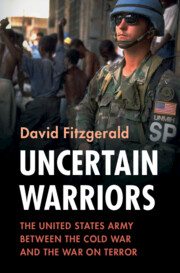Recent scholarship on communal violence in Indonesia since the late New Order has focused on identifying causal mechanisms of particular subtypes of communal violence such as large-scale communal violence, town-level communal rioting, intervillage violence, and lynching. While such analyses are useful in understanding aspects specific to each subtype of violence, analyzing each subtype separately risks the analytical problem of selection on the dependent variable if there are important similarities across subtypes. Drawing on the observation that each of these subtypes appeared to rise and fall together since the late New Order, I propose a common factor that can explain the broad temporal patterns of communal violence. In particular, I point to increasing restraints on the military that arose from intraregime infighting, greater scrutiny of military actions during the keterbukaan (political openness) period, and the withdrawal of the military from police duties during Reformasi. I examine four cases of communal conflict: (1) a case in which intravillage violence was averted, (2) a case of lynching, (3) a case of lynching and subsequent intervillage reprisals, and (4) a case of large-scale communal violence. The first three cases are from Lampung province, and the fourth is the case of Poso district, Central Sulawesi.


